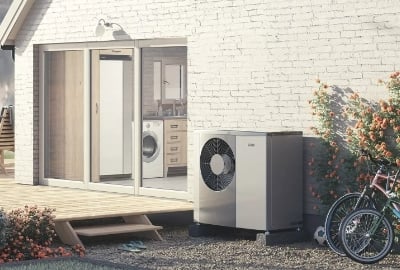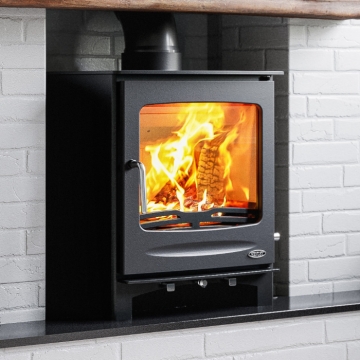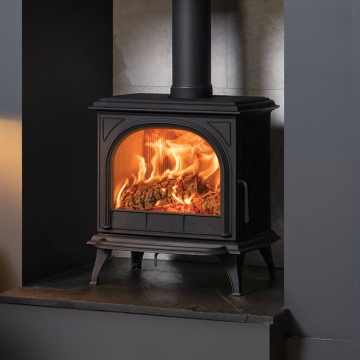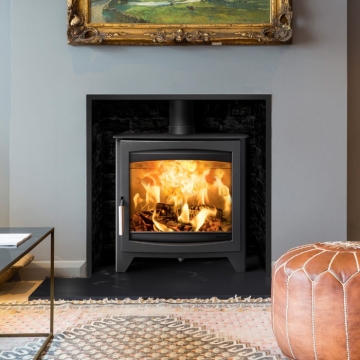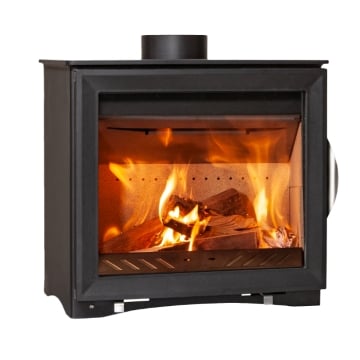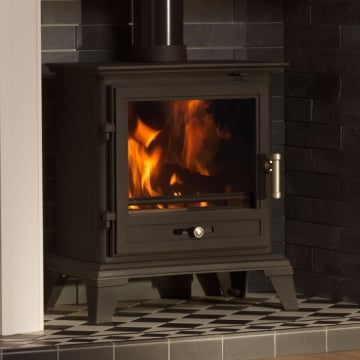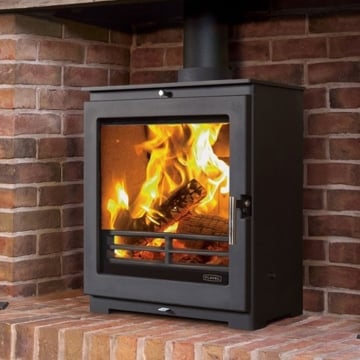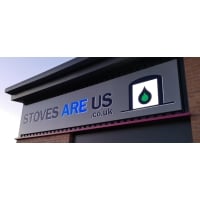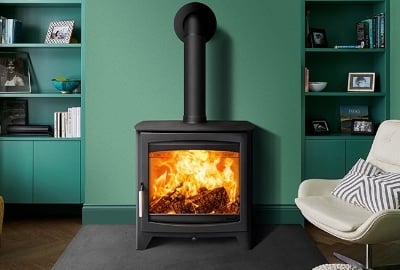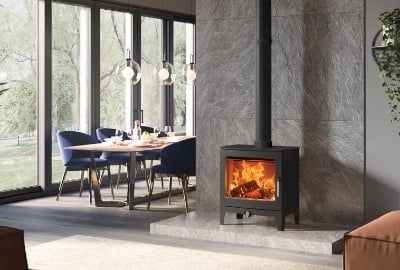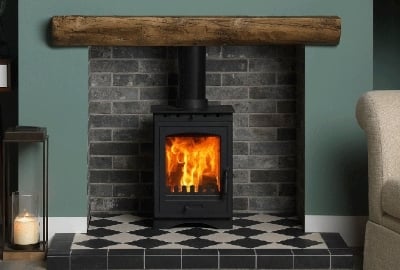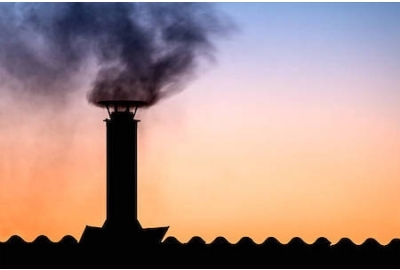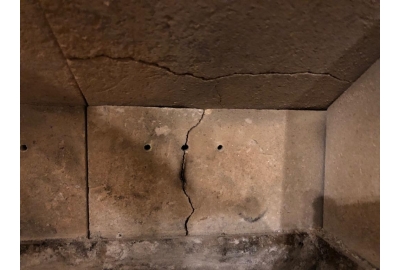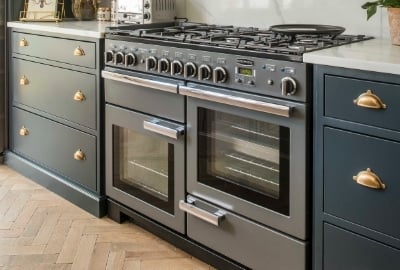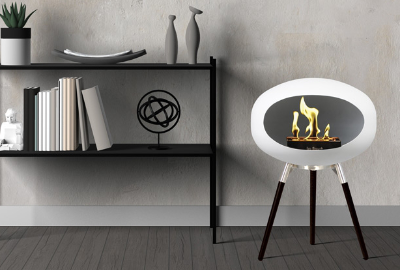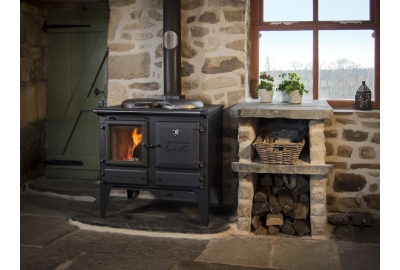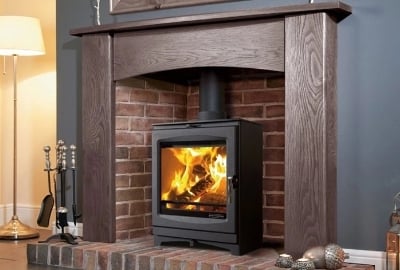Heat pumps are more efficient than other heating systems and according to the Energy Saving Trust they produce around three times more energy than they take in, so they’re a whopping 300% efficient. That’s not to say they’re perfect heating machines and in this edit, we’ll explain how a heat pump works and the common problems that owners bump into. We’ll also discuss why we think it’s a great idea to supplement your heating system with a reliable and powerful log burner! Keep reading if you’re renovating a property and are considering installing a heat pump.
Contents
How does a heat pump work?
What are the two different types of heat pumps?
How to combine a wood burner with a heat pump?
Which are the best log burners to run alongside a heat pump?
What are the common problems with heat pumps?
How does a heat pump work?
A heat pump uses technology that is similar to that found in a refrigerator or an air conditioning unit. It extracts heat from the surrounding air or geothermal energy in the ground, or nearby sources of water then transfers this heat where it is needed. The heat that the pump collects is used to cause a special refrigerant liquid to evaporate and turn into gas which is then processed through a compressor, which heats the gas even more. Once the gas has gone through the compressor it is passed over an internal heat exchange and then either blows into your home as hot air or is more commonly used to heat your hot water system and underfloor heating/radiators. Whilst the heat from a heat pump is free (collected from the atmosphere or water near your home), you do need an electricity supply to operate the pump and the pump will work harder in winter when the air is colder so your energy usage will increase the colder it is outside.
What are the two different types of heat pumps?
There are a few different types of heat pumps and they work similarly, the two you’ll have most likely heard of are an air-source heat pump and a ground source heat pump. You can read the differences between these two types of heat pumps below to determine which is the best for your home heating needs.
Air source heat pumps - This is the most common type of heat pump in the UK and it will operate at temperatures as low as -20°C. They are cheaper than a ground source heat pump and installation also comes at a fraction of the cost. You can heavily reduce your energy consumption if you upgrade your system to a heat pump, they can be used in both small and large properties with heat outputs starting at 6kW up to 20kW or more. An air source heat pump allows you to heat your home as well as supply you with hot water they work best with underfloor heating as they don’t heat water to as high temperatures as a gas boiler would. You can easily control an air source heating system remotely either via NIBE Uplink or install something like Hive to zone the areas of your home to further improve the efficiency. Air source heat pumps can work even better if they are supplemented by something like a wood burner that can provide more intense heat at a quicker rate. Air source pumps are designed to heat your home slowly over a longer period so you should consider installing a log burner to assist in times when the temperature outside drops to below freezing.
Ground source heat pumps - This type of heating system, also known as a ground-to-water heat pump, will transfer heat from the ground to your underfloor heating, radiators or hot water cylinder. A mixture of water and antifreeze flows around a looped pipe that is buried in a trench or borehole in your outdoor space. This type of heat pump is more expensive than an air source heat pump but they can be more reliable because unlike the air outside the ground temperature is consistently 10-12°C throughout the year. The fluid that passes through the underground pipe absorbs the heat from the ground and then passes through a heat exchanger that raises the temperature even further.
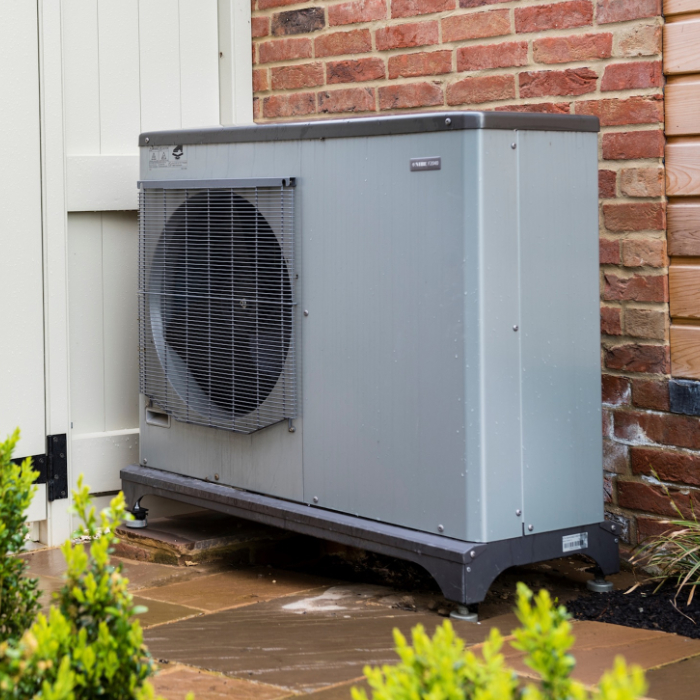

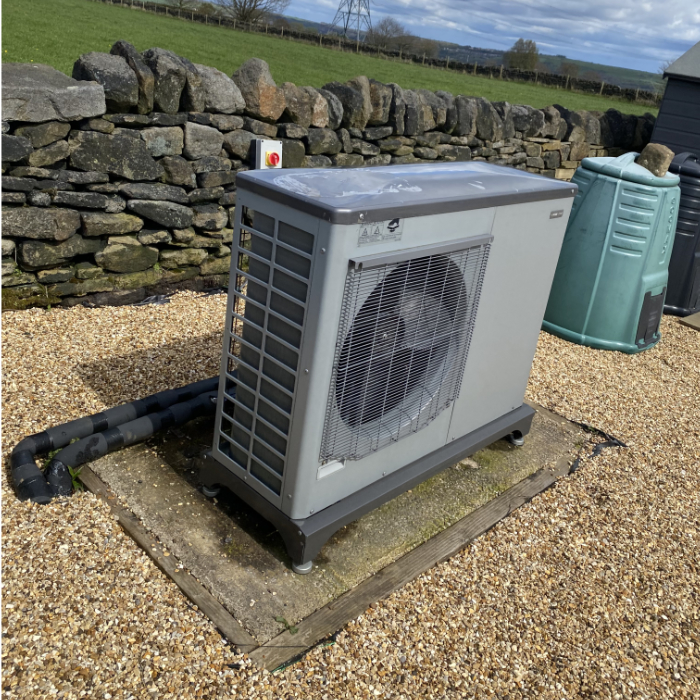

How to combine a wood burner with a heat pump?
Now you have a better idea of how a heat pump works you may be interested in knowing which log burner will best complement your new heating system or how they can work together. To answer this question you’ll need to ask yourself whether you want them to work together or independently, we’ll walk you through the options you have below.
Install and operate them independently - Installing a wood burner independently of your heat pump is, in our opinion, the best option. With this method, you’ll simply install a heat pump to provide hot water and heat to your home and use a wood burner to help bolster the heat in your main living space. Having a log burner at your fingertips makes perfect sense when you install an electric-powered heat pump, it will be especially useful during electric outages and can help your home reach a cosy temperature in winter if your heat pump struggles during these colder months of the year.
Connecting a wood burner to a heat pump - It is possible to connect or dock a central heating stove or back boiler to your heat pump. This dual fuel heating system can be incredibly efficient as the two appliances work hand in hand. You’ll need the help of an experienced installer who has considerable specialist technical knowledge you’ll need a heat pump expert and HETAS-qualified stove installer to ensure the system is properly set up. Your fitter(s) will create a single thermal store and your back boiler stove will transfer the heat generated by wood to this vessel. This combination will heat your entire home using an energy efficient heat pump and ultra-reliable carbon-neutral log burner.
Connect a wood burner to a heat pump and with solar panels - This combination is the epitome of energy efficiency and the result can heavily reduce the running costs of heating your home. You’ll connect your stove and heat pump as above but also introduce PV solar panels to the system. PV panels will supplement the amount of electricity your heat pump uses and you can cut down on the power it draws from the grid and reduce your energy bill. This route does have a considerable upfront investment but there are often Government grants or subsidies for you to take advantage of! The electricity provided by your solar PV panels to your heating system essentially gives you ‘off-grid’ heating.
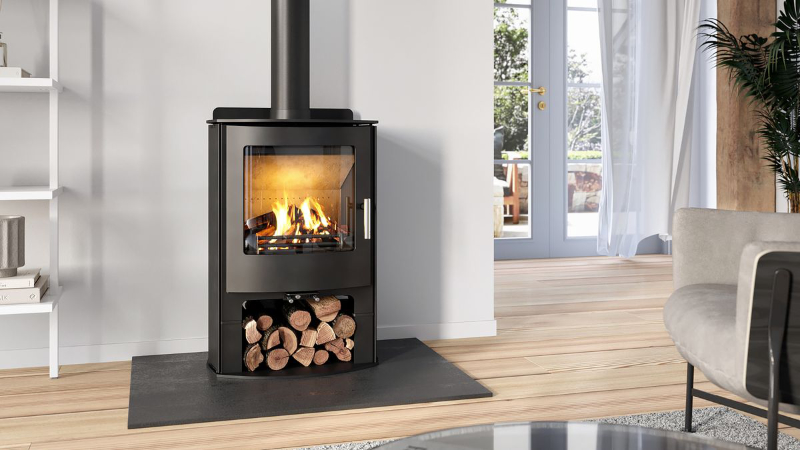
Which are the best log burners to run alongside a heat pump?
Now you’ve read our edit, you might be wondering which log burners might best complement your renewable heating system. Here we’ve put together some of our best back boiler wood burners that you could consider pairing with your air source or ground source heat pump alongside ones you can use independently too.
What are the common problems with heat pumps?
Heat pumps are wonderful heating systems; fitting one in your home instead of a gas boiler will lower your carbon footprint. However, any piece of machinery can have its problems, we’ve taken time to speak to owners of air source heat pumps to find out what they think of the systems they have installed. Here we’ll list some of the common problems found with heat pumps and how you can overcome them.
-
Air pockets with underfloor heating - Trapped air can often mean some areas of your floor feel warm but others are quite cold. The air pockets will prevent the hot water from circulating evenly throughout the pipework in your underfloor heating and your system could need balancing. Especially in winter, it’s a great idea to have a room heater like a wood burner to supplement your system when it runs into trouble.
-
Ensure the heat calculations are correct for the building - One consumer we spoke with had a heat pump installed that wasn’t quite powerful enough to heat their home during the winter months. Without their log burner, their house would have been freezing while the newly, more powerful heat pump was installed.
-
Are heat pumps expensive to run? - Although electricity tariffs are generally high, running a heat pump is usually quite reasonable as they are incredibly efficient. However, you should know that the cost of running a heat pump, especially an air source is more expensive in the winter months as the pumps have to use more electricity to generate heat from the colder air.
To summarise, we highly recommend that you install a wood burner in your home to supplement a heat pump system. The combination of wood-burning stoves and heat pumps gives you the best of both worlds, you’ll see consistent cheap background warmth from your heat pump and have the backup of a powerful wood burner in times when you really need it.

